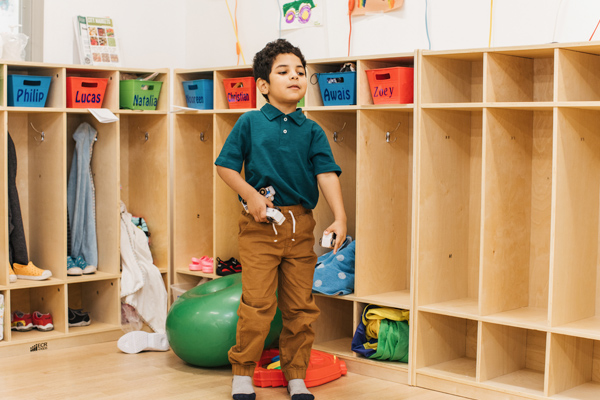Diagnosing Autism in Children
Detecting autism can be difficult because it does not show up on any medical test, like a blood test or an MRI. Instead, doctors or psychologists look at a child’s behaviors and progress in reaching developmental milestones when making a diagnosis. If a child’s parent, caretaker or pediatrician suspects autism, or if screening results point to autism, the child should be referred to a specialist for diagnosis in order to qualify for ABA therapy.

Does your child need a diagnostic evaluation for autism? Let us connect you with a provider today.
The Place Can Coordinate an Autism Diagnosis Evaluation
The first step towards comprehensive care is an accurate diagnosis. We can help match your child with the right specialist so you can get everything you need, all in one place.
How Autism is Diagnosed
When assessing a child for autism spectrum disorder (ASD), a qualified medical doctor or psychologist will look for certain criteria related to social communication challenges and restricted, repetitive behavior. Depending on the severity of symptoms, a child with autism will receive a diagnosis of ASD level 1 (requiring support), ASD level 2 (requiring substantial support) or ASD level 3 (requiring very substantial support). These levels of autism help guide treatment as well as help caregivers and families understand the child’s needs.
Below is a brief overview of the criteria for diagnosing autism, as described in the American Psychiatric Association’s Diagnostic and Statistical Manual, 5th Edition (DSM-5). This information is not exhaustive and is not a substitute for professional evaluation.
Social Communication or Interaction
Social symptoms of autism will be present during early childhood but may not become obvious until the child reaches an age where social demands have increased. To be diagnosed with autism, a child must meet each of three criteria for social communication and interaction:
- Challenges in social-emotional reciprocity (e.g., difficulty with back-and-forth conversation, sharing interests with others, initiating social interactions, or responding when someone else initiates)
- Challenges in nonverbal communication (e.g., lack of eye contact, difficulty understanding facial expressions, body language, or gestures)
Challenges in developing, maintaining, or understanding relationships. (e.g., problems understanding appropriate behaviors for different social contexts, trouble making or keeping friends, lack of interest in peers)
Restrictive, Repetitive Patterns
To meet the clinical criteria for autism, a child must display at least two of the following four characteristics:
- Repetitive movements or speech (e.g., rocking, flapping hands, or repeating meaningless phrases)
- Inflexibility regarding routines or patterns of behavior (e.g., distress over small changes, adherence to specific rituals, rigid thinking)
- Highly restricted interests or fixations (e.g., strong preoccupation with a certain object or topic)
- Hyperreactivity to sensory stimuli (e.g., extreme sensitivity or reaction to light, sound, touch, or other sensory input) or hyporeactivity (e.g., apparent indifference to pain, fascination with bright lights or other stimuli)
For specific diagnostic criteria, please refer to the American Psychiatric Association’s Diagnostic and Statistical Manual of Mental Disorders, 5th ed.
We Change Lives Every Day
Interested in our services and inquiring about placement for your child? Enrollment is now open. Reach out today!
Get Started
By clicking 'Submit', you agree to The Place for Children with Autism's Terms of Use and Privacy Policy. You consent to receive phone calls and SMS messages from The Place for Children with Autism to provide updates and information regarding your business with The Place for Children with Autism. Message frequency may vary. Message & data rates may apply. Reply STOP to opt-out of further messaging. Reply HELP for more information. See our Privacy Policy https://theplaceforchildrenwithautism.com/about-us/privacy-policy